Abstract
A study was made of 93 women and 13 men employed in the spinning department of a factory in Yugoslavia processing soft hemp (Cannabis sativa). There were seven occupational groups, with average concentrations of total airborne hemp dust ranging from 2·9 mg./m.3 to more than 19·5 mg./m.3. Thirtyeight women and 11 men, employed in other departments of the factory with average total dust concentrations below 1·0 mg./m.3, were studied as controls.
In the spinning department 40·6% of the workers had byssinosis and 15·1% had chronic bronchitis (defined as persistent cough and phlegm on most days for as much as three months each year during the last two years). None of the controls suffered from either disease.
After adjustment for age, sitting height, and sex, the F.E.V.0·75 and F.V.C. measured at the beginning of the shift were used to assess the long-term effects of hemp dust on the ventilatory function of the lung. The age-adjusted ratio F.E.V.0·75/F.V.C. was also used. A comparison between the control group and the seven exposed groups showed no meaningful association between ventilatory function and present levels of dust exposure, but byssinotics with chronic bronchitis had a mean age-adjusted F.E.V.0·75/F.V.C. ratio significantly lower than that of workers with neither disease (P<0·05).
Acute effects of hemp dust, measured by the change in F.E.V.0·75 and F.V.C. during the shift, were considerable. There were marked reductions in the mean F.E.V.0·75 and F.V.C. during the shift in all the occupational groups exposed to high concentrations of dust. Byssinotics with chronic bronchitis had a significantly greater mean decrease in F.E.V.0·75 during the shift than the byssinotics without chronic bronchitis, and the workers with neither disease (P<0·02).
There is no doubt that the dust of Cannabis sativa hemp can cause byssinosis and at least temporary impairment of ventilatory function, varying in severity according to the level of dust exposure and the presence of respiratory disease.
Full text
PDF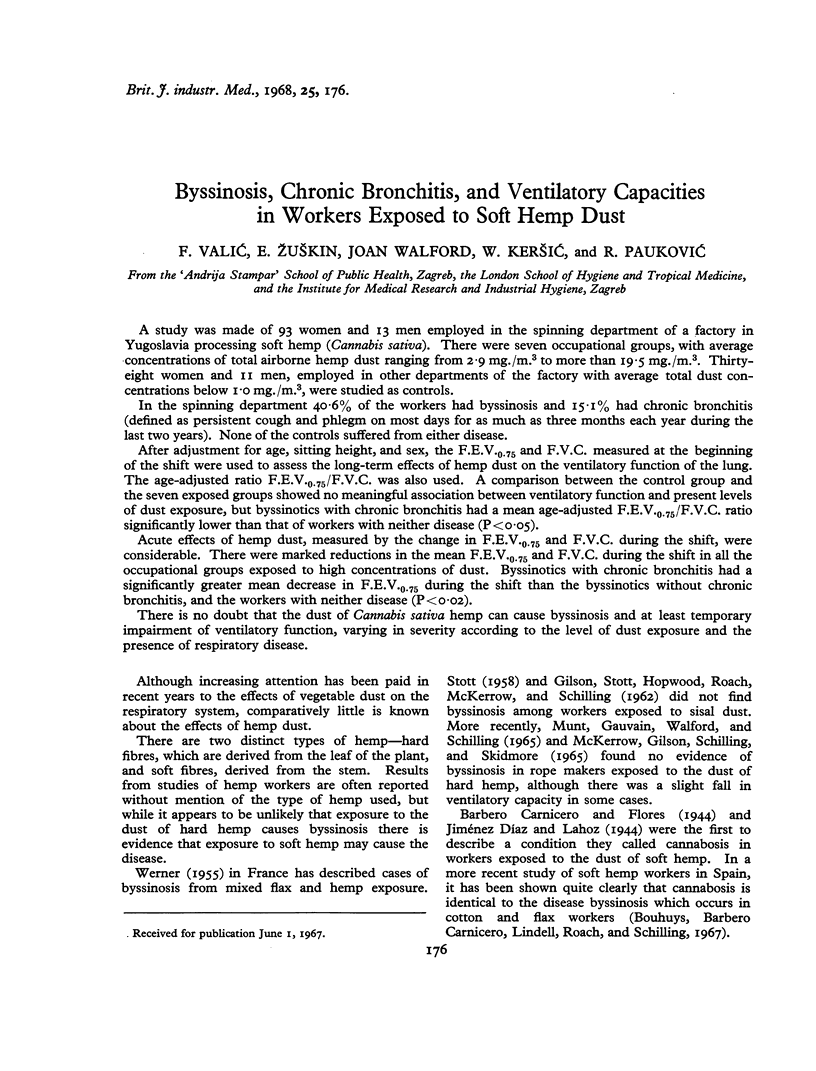
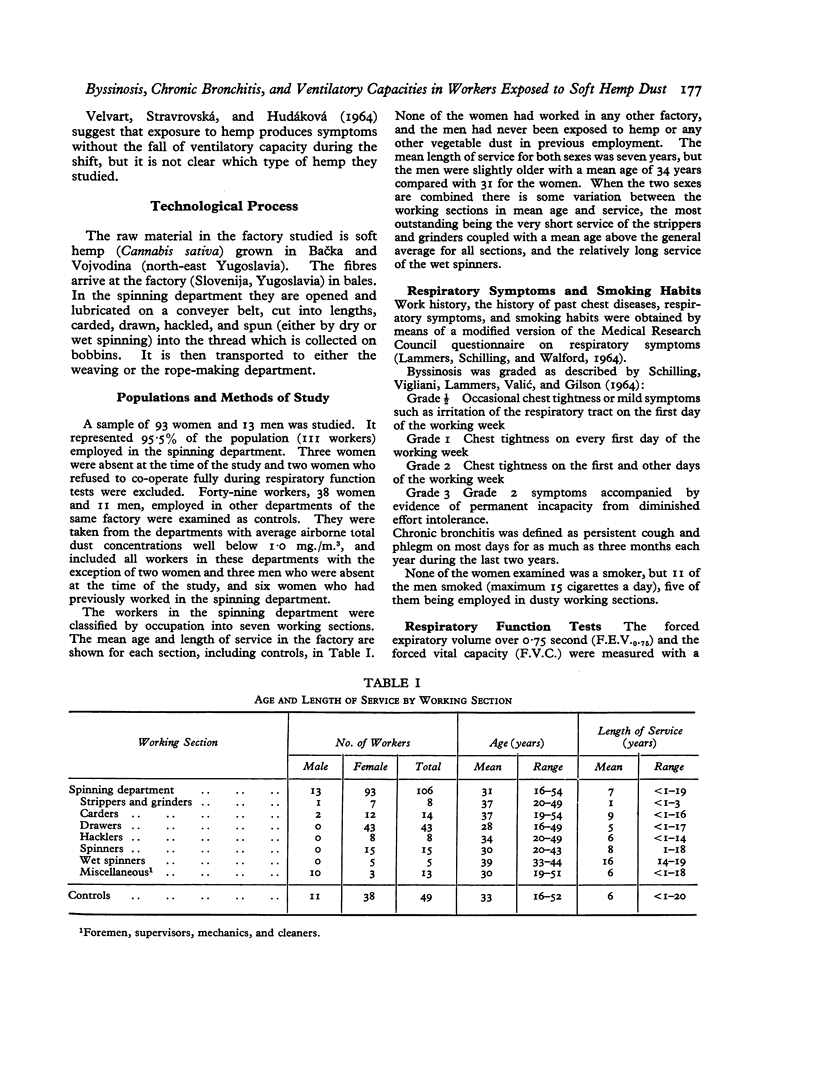
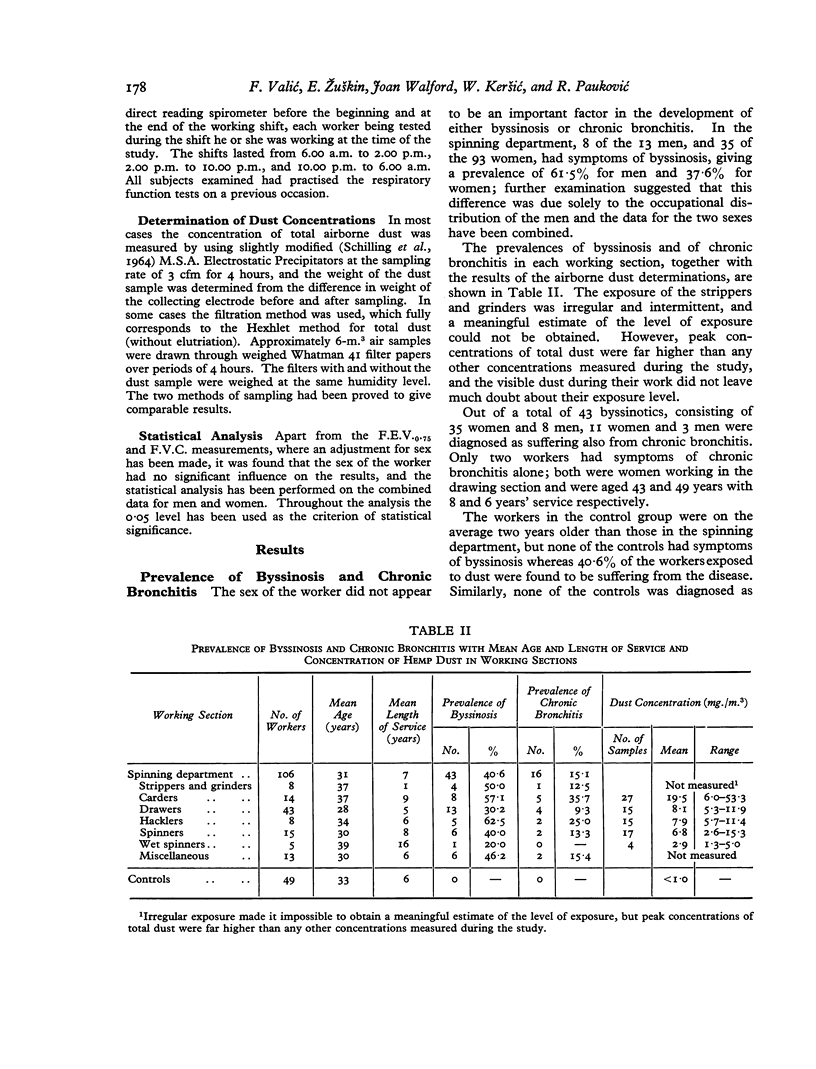
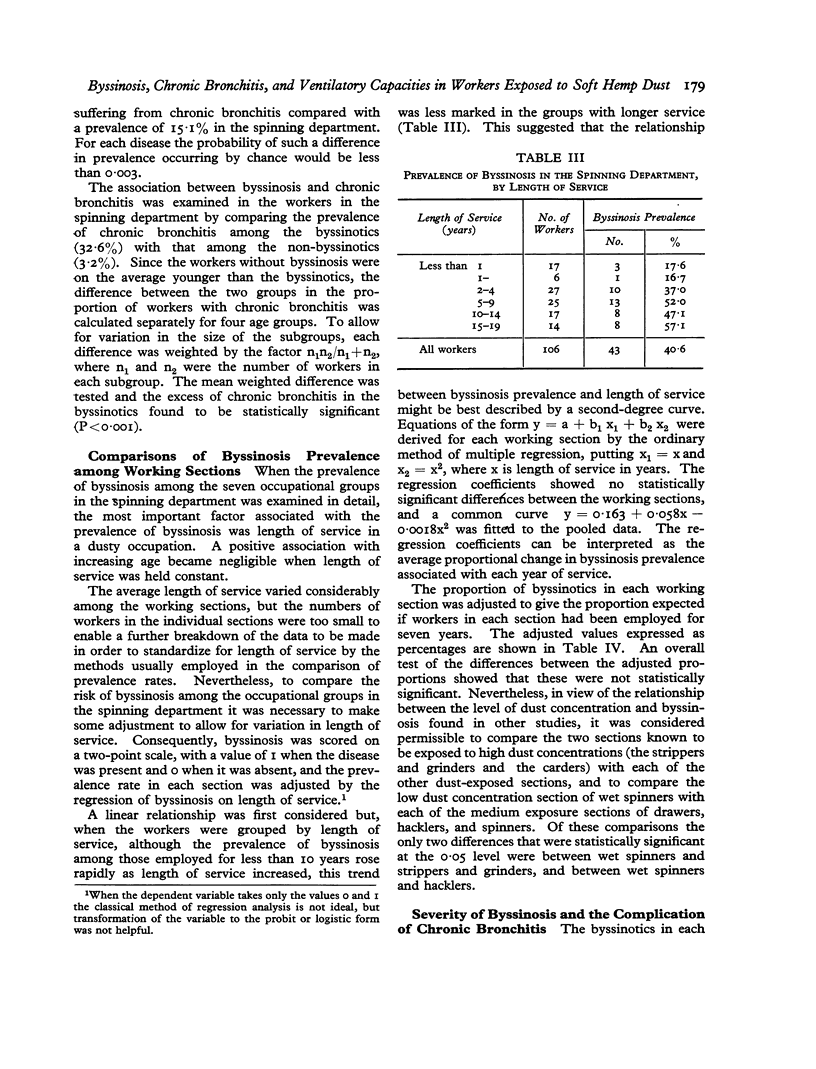
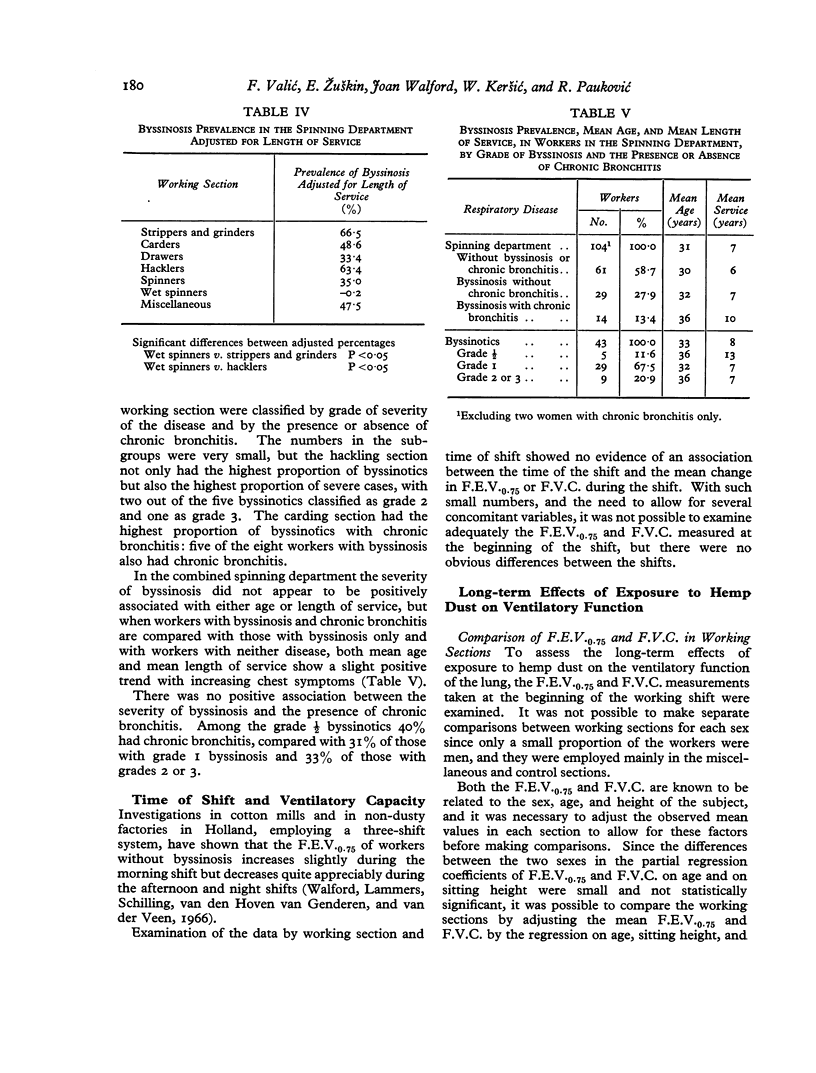
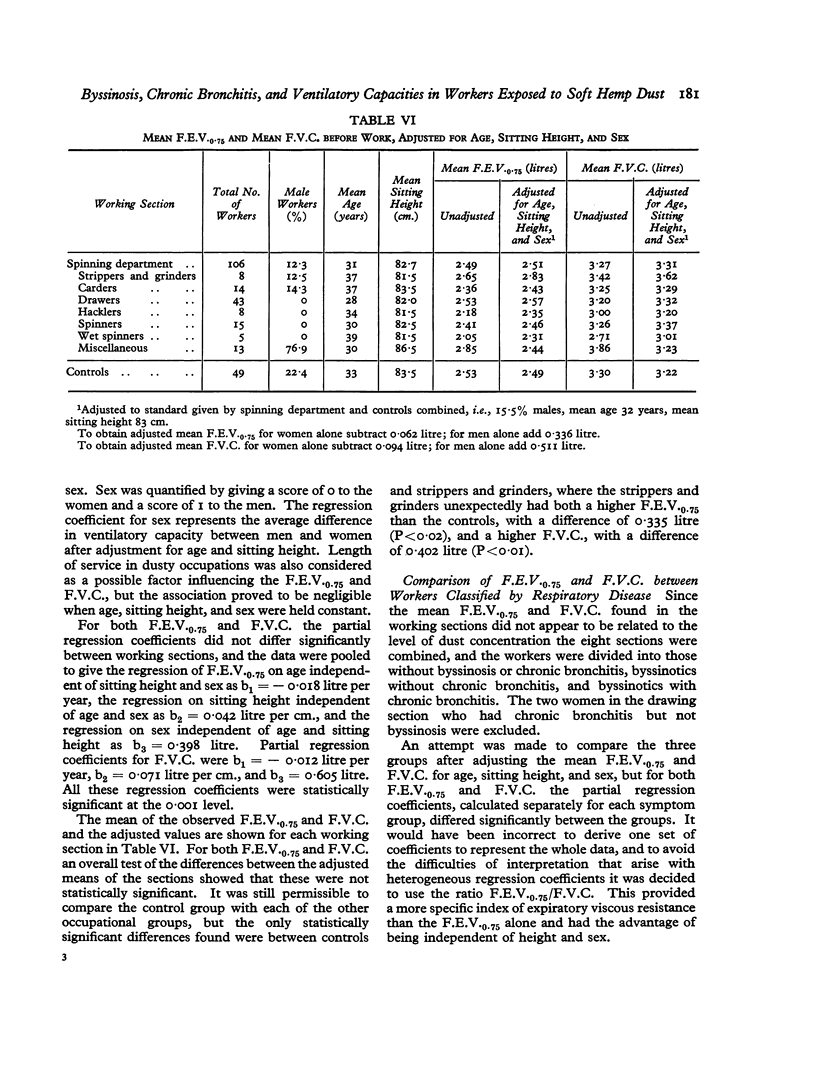

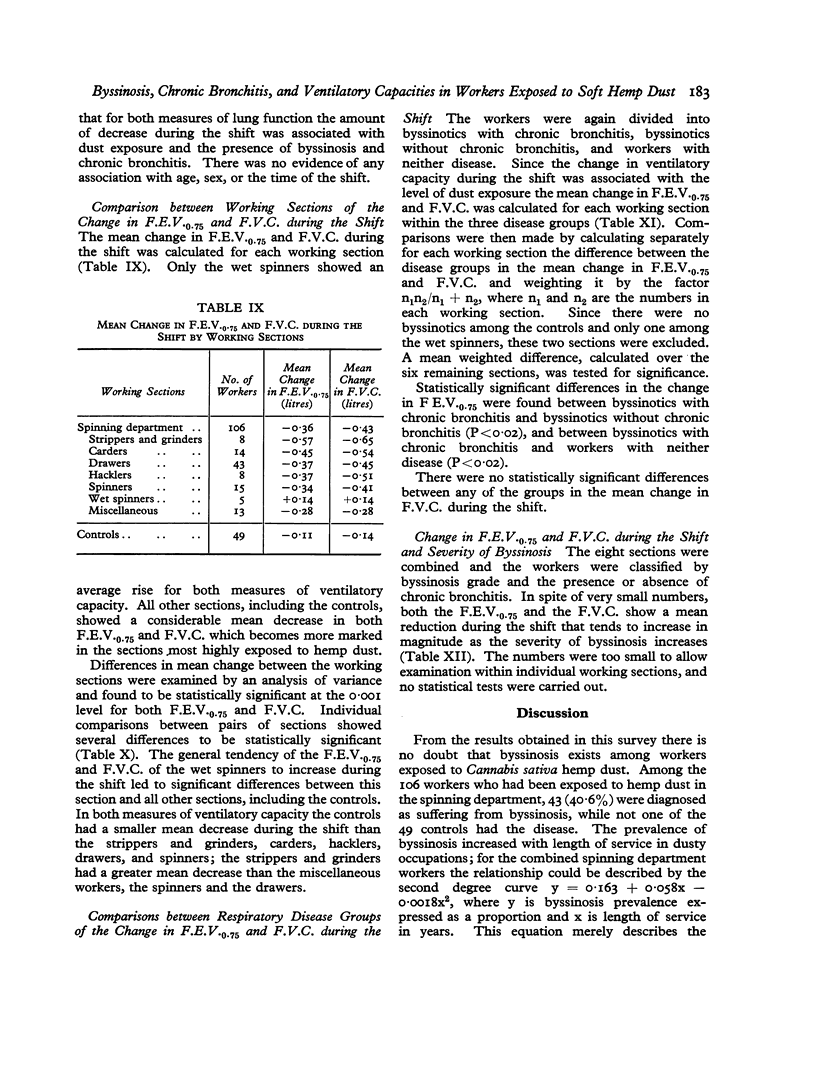
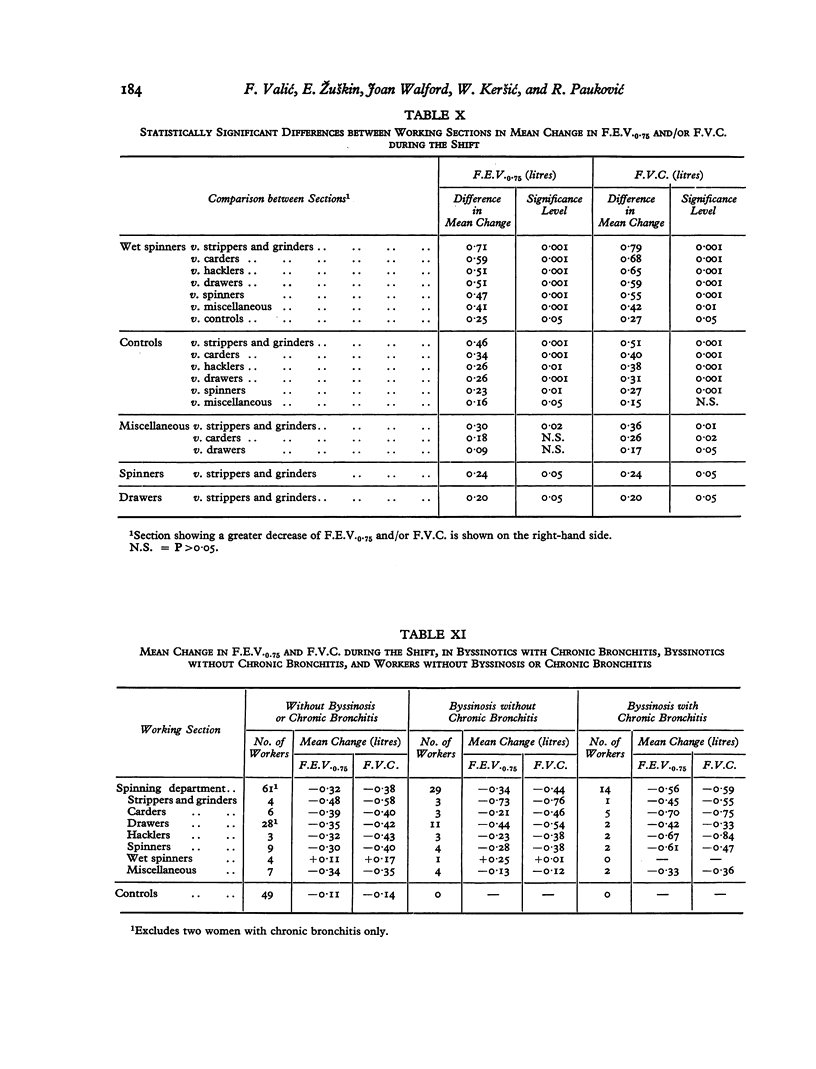
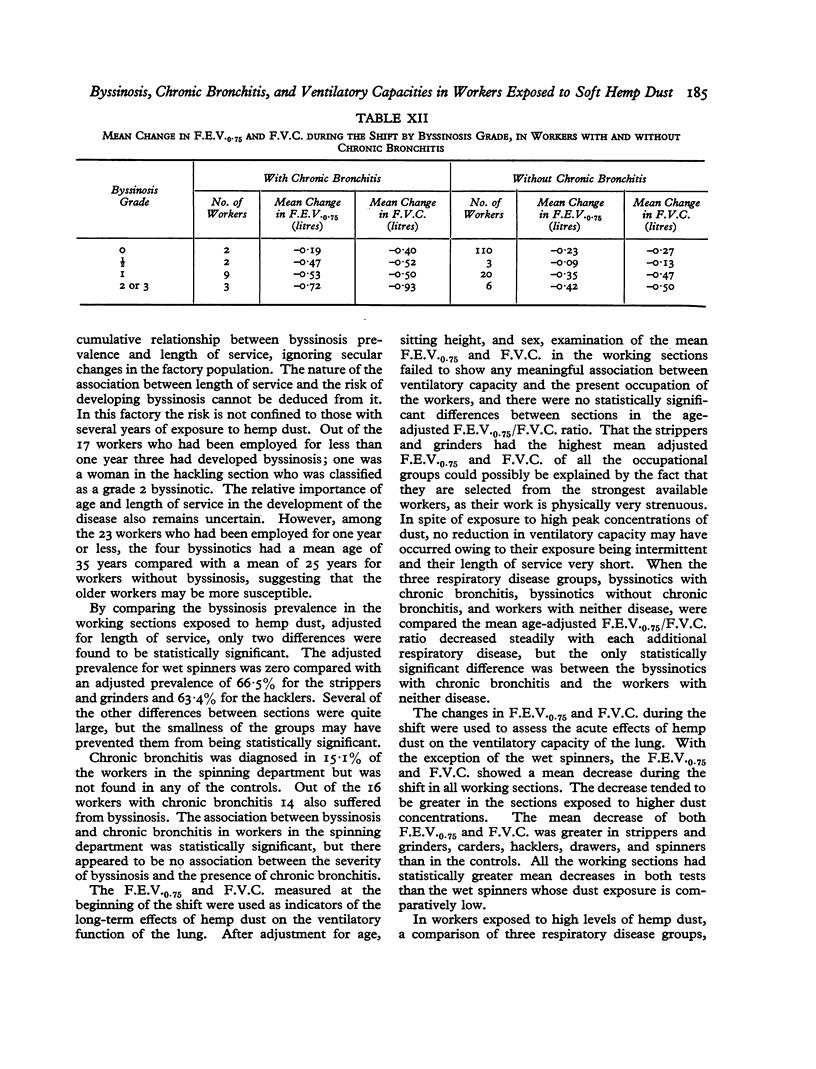
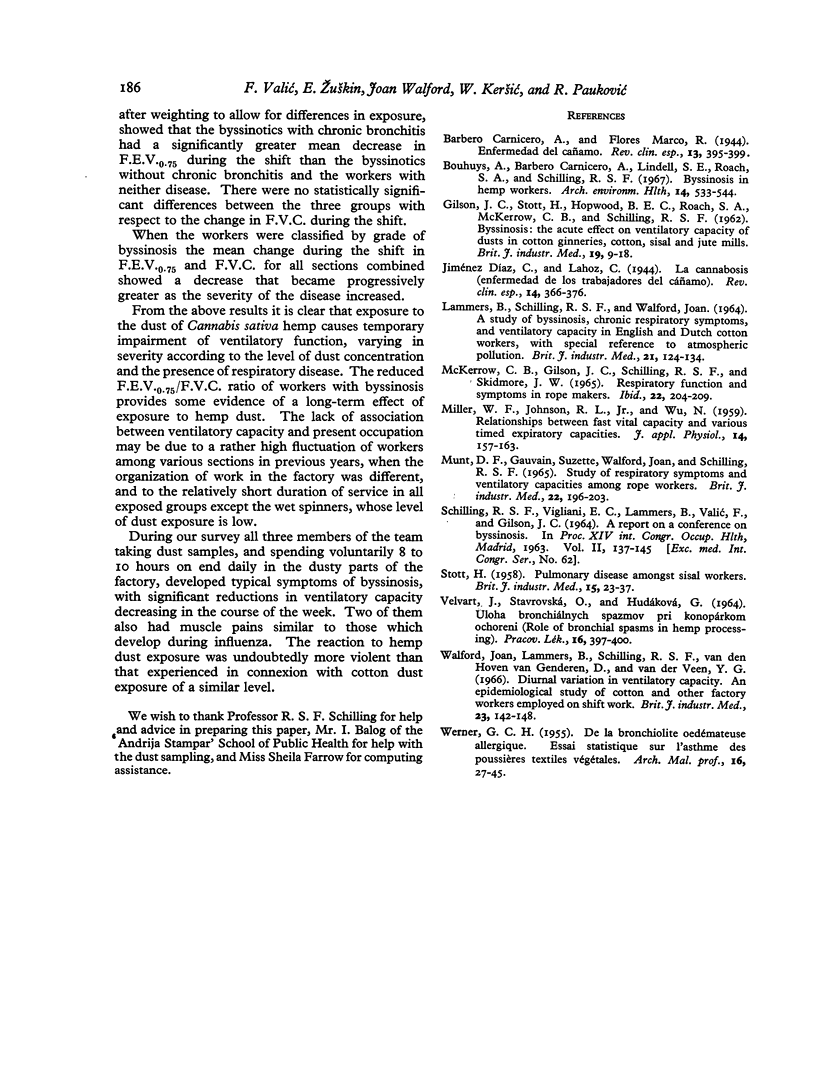
Selected References
These references are in PubMed. This may not be the complete list of references from this article.
- Bouhuys A., Barbero A., Lindell S. E., Roach S. A., Schilling R. S. Byssinosis in hemp workers. Arch Environ Health. 1967 Apr;14(4):533–544. doi: 10.1080/00039896.1967.10664790. [DOI] [PubMed] [Google Scholar]
- LAMMERS B., SCHILLING R. S., WALFORD J., MEADOWS S., ROACH S. A., VAN DEN HOVEN D., VAN DEN VEEN Y. G., WOOD C. H. A STUDY OF BYSSINOSIS, CHRONIC RESPIRATORY SYMPTOMS, AND VENTILATORY CAPACITY IN ENGLISH AND DUTCH COTTON WORKERS, WITH SPECIAL REFERENCE TO ATMOSPHERIC POLLUTION. Br J Ind Med. 1964 Apr;21:124–134. doi: 10.1136/oem.21.2.124. [DOI] [PMC free article] [PubMed] [Google Scholar]
- VELVART J., STAVROVSKA O., HUDAKOVA G. ULOHA BRONCHI'ALNYCH SPAZMOV PRI KONOP'ARSKOM OCHOREN'I. Prac Lek. 1964 Nov;16:397–400. [PubMed] [Google Scholar]
- WERNER G. C. De la bronchiolite oedémateuse allergique; essai statistique sur l'asthme des poussières textiles végétales. Arch Mal Prof. 1955;16(1):27–45. [PubMed] [Google Scholar]
- Walford J., Lammers B., Schilling R. S., Hoven van Genderen D., van der Veen Y. G. Diurnal variation in ventilatory capacity. An epidemiological study of cotton and other factory workers employed on shift work. Br J Ind Med. 1966 Apr;23(2):142–148. doi: 10.1136/oem.23.2.142. [DOI] [PMC free article] [PubMed] [Google Scholar]


